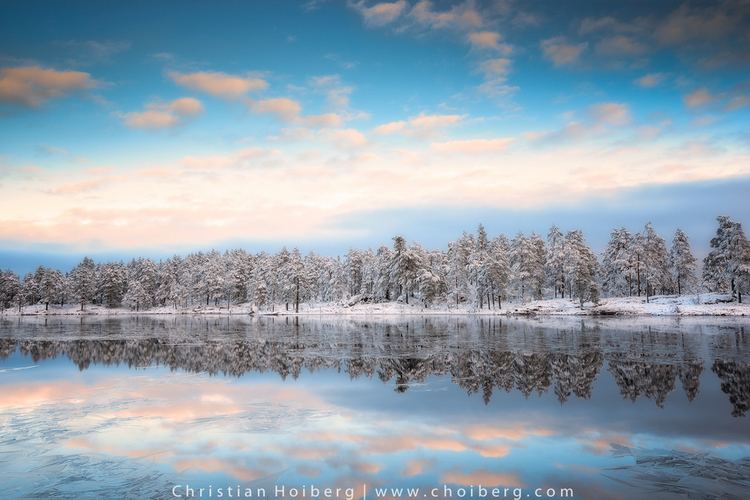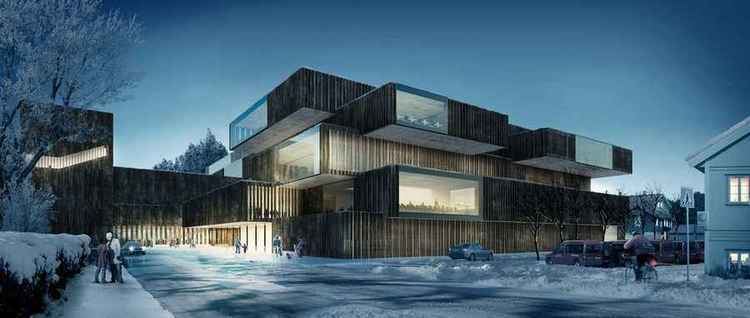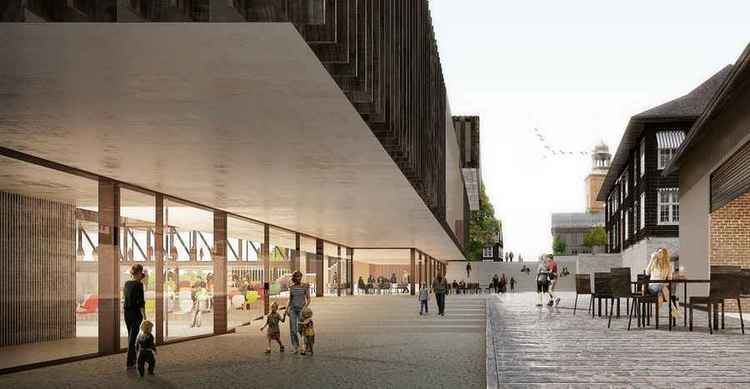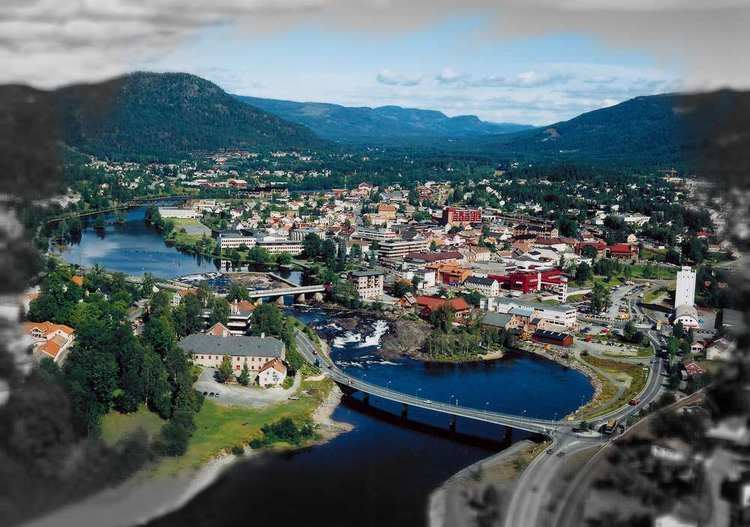Country District | Area 792 km2 Mayor Wenche Grinderud | |
 | ||
Language spoken www.kongsberg.kommune.no | ||
Map of Kongsberg
Kongsberg ( listen ) is a town and municipality in Buskerud county, Norway.
Contents
- Map of Kongsberg
- Kongsberg downhill fest 2012 norway longboarding
- Few laps in kongsberg skisenter
- Name
- Coat of arms
- History
- Geography
- Transportation
- Culture
- Sports
- The crowns in Hvet
- Notable residents
- Twin towns sister cities
- References

The city was founded in 1624 under the name Konings Bierg by Danish-Norwegian king Christian IV as a mining community. In Norway's 1749 census, Kongsberg was the most populous town in Eastern Norway. It was granted its royal charter of trade—amounting to official township—in 1802. The municipality of Kongsberg was established on 1 January 1838 (see formannskapsdistrikt). The rural municipalities of Ytre Sandsvær and Øvre Sandsvær were merged into the municipality of Kongsberg on 1 January 1964.

Today, Kongsberg is perhaps best known for being the home of Norway's major defence contractor, Kongsberg Gruppen, formerly Kongsberg Vaapenfabrikk. Two of its well-known products were the Kongsberg Colt and the Krag–Jørgensen rifle. The latter was adopted in the late 19th century as the standard army rifle in Denmark, United States of America and Norway.

Kongsberg downhill fest 2012 norway longboarding
Few laps in kongsberg skisenter
Name

The name Konings Bierg, a modern form Kongsberg, is based on the following two elements: the genitive case of konge which means "king" (referring to king Christian IV) and berg which means "mountain".
Coat-of-arms
The coat-of-arms is from modern times and was designed by Hallvard Tretteberg. They were granted on 25 August 1972. They are based upon the old seal for the city from 1689 which shows the Roman god Janus dressed as an emperor (to represent the king); the sword and the pair of scales represents justice. The colour green represents the forests, silver represents the mountains, and gold represents wealth.
History
Kongsberg is particularly known for its old silver mines, from which roughly 1,350 tonnes (2,980,000 lb) of silver was extracted between the discovery of the silver ore seams in 1623, and the last year of mining, in 1957. In the 1769 census, the mines employed about 4,000 workers. With 8,000 inhabitants in total, the town was the second largest in Norway, after Bergen (and thus larger than today's capital, Oslo).
Following several hard years with reduced silver output from the mines, the war of 1807–1814, and a severe town fire in 1810 where 56 houses on the west side were destroyed, mining was complemented by the government establishing a defense industry in 1814. By 1835, the population had declined to 3,540.
During peaceful times, the defence industry gradually evolved into many other kinds of high tech activities as well, now dominating the town's employment. In 1987, however, the state-owned Kongsberg Vaapenfabrikk (English: Kongsberg Weapons Factory) suffered a major financial crisis as well as accusations of breaching the CoCom rules by selling sensitive technology to the Soviet bloc. As a result, the company was split into several smaller units and partly sold to private investors. Today, the separate firms thrive as one of Norway's main high-tech industrial clusters, centering on the defence and maritime company Kongsberg Gruppen which is listed on the Oslo Stock Exchange.
Kongsberg is also home to the Mint of Norway (Norwegian: Det Norske Myntverket), which mints Norwegian coins and also produces circulating and collectors' coins for other countries such as Israel. It was established in 1686, and was renamed from the Royal Norwegian Mint (Norwegian: Den Kongelige Mynt) in 2004 after having been sold to private investors (the Mint of Finland and Norwegian company Samlerhuset) in 2003.
Geography
The neighbouring municipalities of Kongsberg are Flesberg to the north; Øvre Eiker and Hof to the east; Lardal, Siljan, and Skien to the south; and Sauherad and Notodden to the west. Of these, the two first lie in Buskerud county like Kongsberg, while Hof and Lardal lie in Vestfold, and the others lie in Telemark. The town is divided by the river Numedalslågen, which has three waterfalls in the town itself.
Transportation
The main highways are the E134, crossing Kongsberg east to west (and connected to the E18 to Oslo), and Norwegian national road 40 (Riksvei 40), going north to south. The Sørland Line stops at Kongsberg station, with connection to local and regional bus lines.
Culture
With the population increase during the town's silver mining heyday of the mid-sixteenth century came the need for a new church, which was built over a 21-year period and inaugurated in 1761. It has an austere red brick exterior, but a richly decorated baroque interior including unique chandeliers made at Nøstetangen Glass Works in neighbouring Hokksund. Kongsberg Church remains one of the largest in Norway with a seating capacity of 2,400.
The church's original baroque-era pipe organ, made by renowned German organ builder Gottfried Heinrich Gloger in 1760–65, was fully restored by Jürgen Ahrend in 1999–2000 and reopened to great fanfare in January 2001. With its 42 voices, it is the largest baroque organ in Scandinavia. At the end of January each year, the Gloger Music Festival now draws a select crowd of artists and music lovers from all over the world.
Since 1964, Kongsberg has hosted Kongsberg Jazzfestival, an annual international jazz festival. Heavily sponsored by the local industry, prominent world acts such as BB King, Diana Krall, Ornette Coleman, Joshua Redman and John Scofield have played at the festival in recent years.
Sports
The town is known for many great ski jumpers. Birger Ruud and his two brothers, as well as many other townsmen, such as Petter Hugsted, won numerous medals in Winter Olympics and other international championships in the 1930s and 1940s. The first ski jumping technique, the Konsberger was developed by Jacob Tullin Thams and Sigmund Ruud in Kongsberg, and was the most popular ski jumping technique from the late 1920s to the late 1950s. Their medals and equipment can be seen at the Kongsberg Skiing Museum (Kongsberg Skimuseum) which is co-located with the Norwegian Mining Museum (Norsk Bergverksmuseum) in central Kongsberg. Inventor of the modern ski binding, Norwegian-American skier and Olympic skiing coach Hjalmar Hvam, was born in Kongsberg in 1902. Recent winter sports athletes of the Kongsberg region include Olympic snowboarders Stine Brun Kjeldaas, Silje Norendal and Halvor Lunn; cross-country ski sprinter Børre Næss of the village Efteløt; and ski jumper Sigurd Pettersen of nearby municipality Rollag (60 km/37 mi north of Kongsberg). A large ski centre for alpine skiing and snowboarding, with several lifts and ca 320 m of height difference has been in operation and gradually expanding since 1965. Kongsberg hosted the cross-country skiing parts of the 2006 Nordic skiing National Championships. The arranging sportsclub was IL Skrim, the ski tracks being located at Heistadmoen, a former military camp.
The 1978 World Orienteering Championships were held in Kongsberg.
The crowns in Håvet
This attraction (Kronene i Håvet) is a site where Norwegian royal monograms have been carved into the mountainside overlooking Kongsberg to mark royal visits to the city. In June 1704 King Frederik IV visited Kongsberg and started a tradition that is still celebrated. King Frederik also arranged for the monograms of visits from earlier monarchs to be recorded as well.
The first monogram on the hillside property belonged to Christian IV who in 1624 founded Kongsberg at the site of the newly discovered silver deposits. His visit was followed by that of Frederik III (1648) and Christian V (1685). Christian VI and his Queen Sofie Magdalene (1733), Frederik V (1749), Oscar I (1845), Oscar II (1890), Haakon VII (1908), Olav V (1962) and most recently Harald V (1995).
Notable residents
Twin towns — sister cities
The following cities are twinned with Kongsberg:
